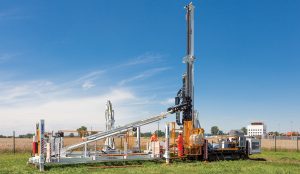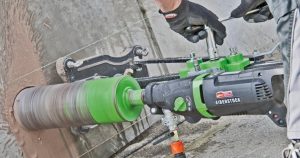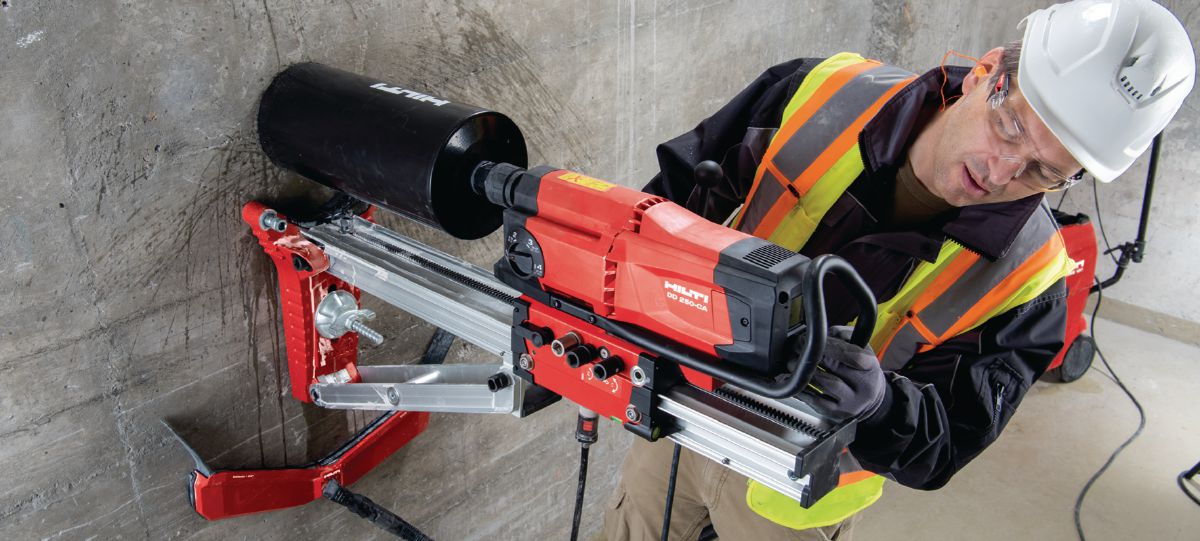What are the Risks of Core Drilling?
When it comes to construction and renovation projects, core drilling is a common technique used to create precise holes in various materials, such as concrete, masonry, and asphalt. While core drilling is a valuable tool in the construction industry, it is not without its risks. Understanding these risks is crucial for ensuring the safety of workers and the success of your project. In this article, we’ll delve into the potential hazards associated with core drilling and explore ways to mitigate them.
The Importance of Proper Training and Equipment
Hazardous Dust and Debris
One of the primary risks of core drilling is the generation of hazardous dust and debris. When the drill bit penetrates materials like concrete or stone, it can produce fine particles that become airborne. Inhaling these particles can lead to serious health issues, including respiratory problems and lung diseases.

Mitigation: To minimize the risk of dust exposure, it is essential to use proper dust extraction equipment, such as vacuum systems with HEPA filters. Additionally, workers should wear respiratory protection, like N95 masks, and ensure that the drilling area is well-ventilated.
Noise Pollution
Core drilling can produce significant noise levels, which can be harmful to both workers and bystanders. Prolonged exposure to loud noise can lead to hearing loss and other auditory problems.
Mitigation: To mitigate the risk of noise pollution, it is essential to provide workers with appropriate hearing protection, such as earplugs or earmuffs. Additionally, scheduling noisy drilling activities during times when fewer people are present can help reduce the impact on the surrounding environment.
Mechanical Hazards
The machinery used for core drilling, including the drill itself and the core bit, can pose mechanical hazards if not handled correctly. These hazards may result in injuries such as cuts, abrasions, or more severe accidents if equipment malfunctions.
Mitigation: Proper training is crucial to ensure that workers know how to operate core drilling equipment safely. Regular equipment inspections and maintenance are also essential to prevent mechanical failures that could lead to accidents.
Environmental Considerations
Disposal of Waste Materials
After core drilling is complete, there is often a need to dispose of the waste materials, including the extracted cores. Improper disposal methods can harm the environment, leading to soil and water pollution.
Mitigation: Implement proper waste management practices, such as recycling or disposing of waste materials at designated facilities. Follow local regulations and guidelines to minimize the environmental impact of core drilling projects.
Damage to Underground Utilities
During core drilling, there is a risk of unintentionally damaging underground utilities, such as water pipes, electrical cables, or gas lines. This can lead to service disruptions, safety hazards, and costly repairs.
Mitigation: Prior to drilling, conduct thorough utility locates and surveys to identify the exact location of underground utilities. Use non-destructive techniques like ground-penetrating radar (GPR) to minimize the risk of accidental damage.

Safety Protocols and Regulations
Lack of Proper Safety Protocols
Failure to establish and follow safety protocols is a significant risk associated with core drilling. Inadequate training, disregard for safety guidelines, or rushing through the drilling process can result in accidents and injuries.
Mitigation: Employ strict safety protocols, including safety briefings, hazard assessments, and emergency response plans. Ensure that all workers are adequately trained and understand the importance of following safety procedures.
Non-compliance with Regulations
Core drilling projects must adhere to local, state, and federal regulations. Non-compliance can lead to legal issues, fines, and project delays.
Mitigation: Stay informed about relevant regulations and obtain the necessary permits and approvals before beginning any core drilling project. Regularly audit your operations to ensure compliance with all applicable laws and regulations.
Conclusion
Core drilling is a valuable technique in construction and renovation projects, but it comes with inherent risks that should not be taken lightly. By understanding and addressing these risks through proper training, equipment, and safety protocols, you can ensure the safety of your workers and the success of your core drilling projects. Additionally, considering environmental factors and complying with regulations are essential steps in mitigating the potential hazards associated with core drilling.
Incorporating these safety measures and best practices will not only protect your team but also contribute to the overall success and sustainability of your construction and renovation endeavors. Remember, when it comes to core drilling, safety should always be the top priority. https://drillitco.com.au/drill-it-group-australia/

